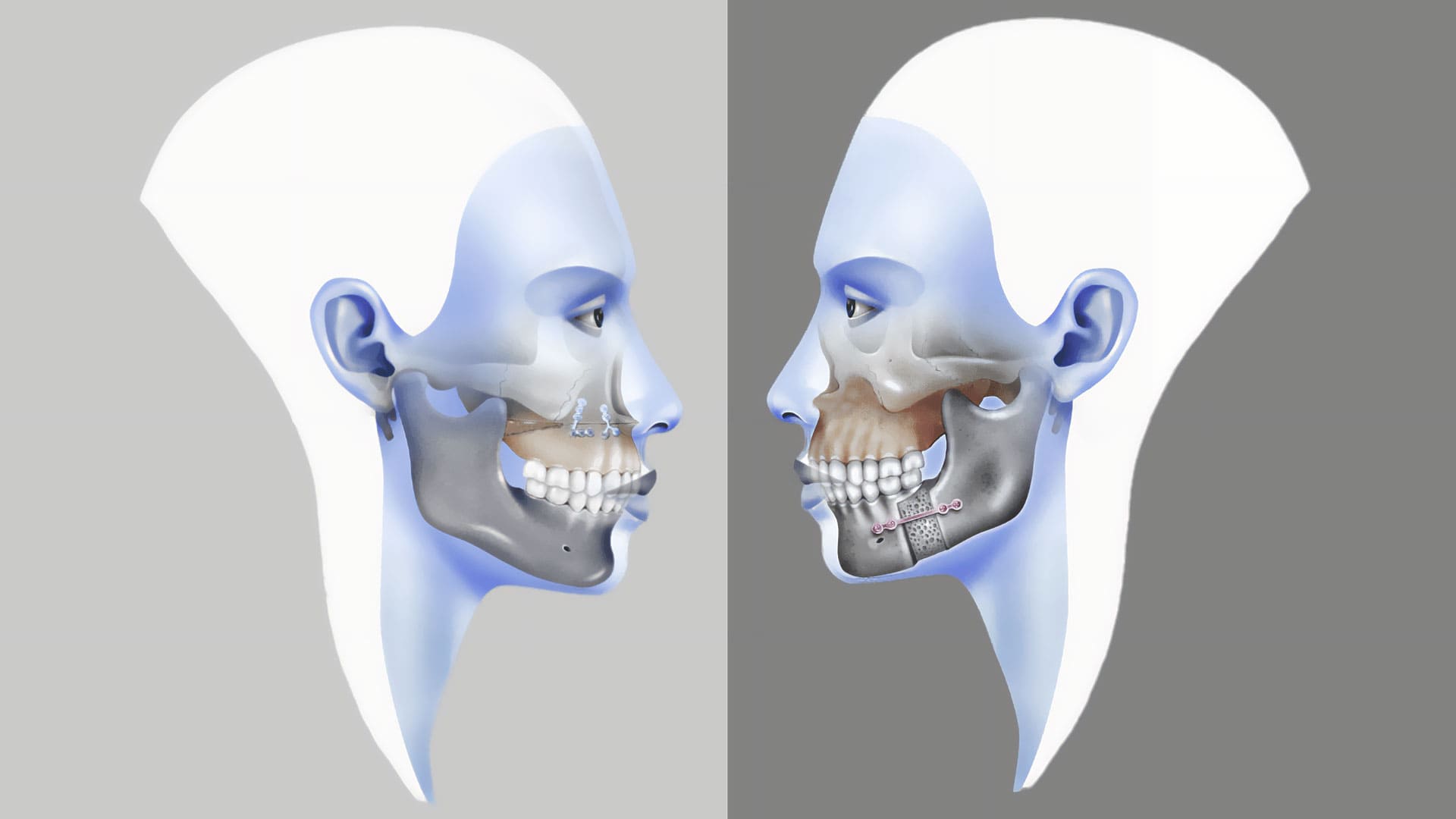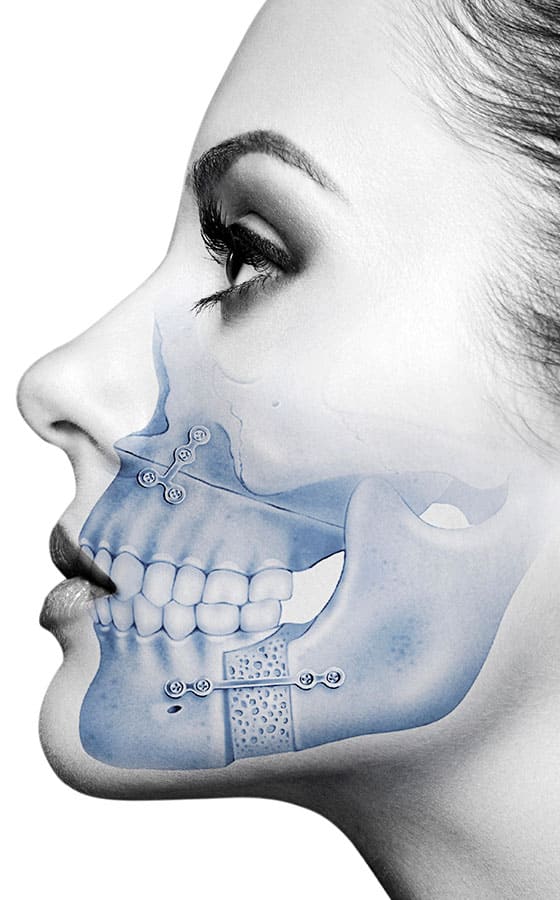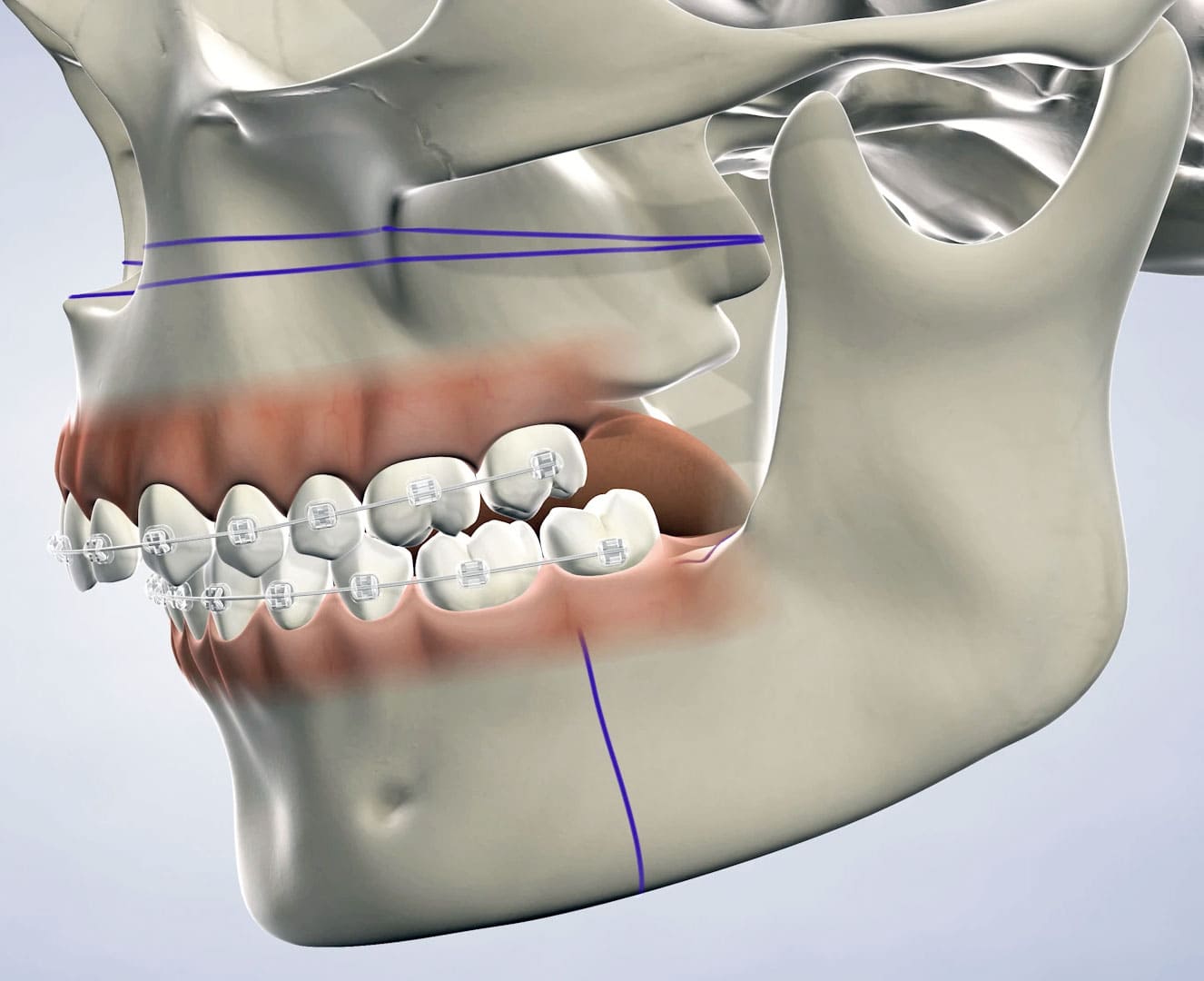
Orthognathic
Surgery
Orthognathic Surgery
What is Orthognathic Surgery?
Orthognathic surgery is a surgical procedure performed to correct deformities of the jaw and facial bones. This surgical procedure, which is applied due to improper closing of the teeth, jawbone abnormalities or aesthetic concerns, provides both aesthetic and functional improvements. The word “ortho” means to correct and “gnatik” means jaw. Orthognathic surgery is performed in combination with orthodontic treatment to ensure the correct bite of the teeth.
Purpose and Application Areas of Orthognathic Surgery
Orthognathic surgery aims to meet both the aesthetic and functional needs of the person by correcting disorders in the jaw position.
This procedure is usually performed for
1. Jaw Anomalies
Jaw position disorders, such as the lower jaw being forward or backward.
2. Incompatibility of Teeth:
The upper and lower teeth do not close properly (malocclusion).
3. Chewing and Speech Problems:
Misalignment of the jaw and teeth can cause chewing and speech problems.
4. Sleep Apnea:
Disorders in the jaw structure can lead to sleep apnea by narrowing the airway.
5. Facial Asymmetry:
Asymmetries in the jaw and facial bones can be corrected with orthognathic surgery.
6. Aesthetic Objectives:
It can also be done to improve facial aesthetics, to achieve a more balanced profile.
Who is Orthognathic Surgery Applied to?
Orthognathic surgery is applied in cases with severe jaw malocclusion and where orthodontic treatment alone is not sufficient. It is generally preferred in individuals who are over the age of 18, that is, in people whose jaw growth is complete. This surgical procedure is a solution for patients who are both dissatisfied with their aesthetic appearance and have functional problems.
Before and After Orthognathic Surgery
Orthognathic surgery is usually performed in combination with orthodontic treatment. The treatment process consists of the following stages:
1. Orthodontic Preparation:
Before the surgery, orthodontic treatment (braces, wires, etc.) is applied to align the teeth correctly. This process can take several months to several years.
2. Surgical Intervention:
After the teeth are aligned with orthodontic treatment, the jaw bones are brought into the desired position during surgery. This procedure is performed under general anesthesia and the jaws are fixed after surgery.
3. Postoperative Recovery:
Postoperative recovery may take several weeks. During this period, it is recommended to eat soft foods and avoid certain activities. There may be mild swelling and pain in the jaws, but these usually subside within a few weeks.
4. Arrangements after Orthodontic Treatment:
Orthodontic treatment may continue for some time after surgery. The use of brackets may be necessary for a while to ensure that the teeth remain in the ideal position.
5. Facial Asymmetry:
Asymmetries in the jaw and facial bones can be corrected with orthognathic surgery.
6. Aesthetic Objectives:
It can also be done to improve facial aesthetics, to achieve a more balanced profile.

Benefits of Orthognathic Surgery
The benefits offered by orthognathic surgery can be both aesthetically and functionally significant. These benefits include
Aesthetic Recovery:
Jaw and facial contours gain a more balanced and aesthetic appearance.
Functional Recovery:
Easier chewing, speaking and breathing.
Improving Dental Health:
Properly aligned teeth reduce tooth wear and other dental health problems.
Increased Self-Confidence:
Improvement in aesthetic appearance can boost self-confidence.

Risks and Complications
As with any surgical procedure, orthognathic surgery has some risks. These risks include infection, bleeding, nerve damage, jaw joint problems and, in rare cases, improper healing of the jaw bones. To minimize these risks, the procedure should be performed by an experienced maxillofacial surgeon.
Conclusion
Orthognathic surgery is an effective treatment method that improves quality of life both aesthetically and functionally. If you are experiencing jaw position or bite disorders, you can consult a maxillofacial surgeon to find out if orthognathic surgery is suitable for you. This treatment will provide both functional improvements in daily life and aesthetically create an important balance in your facial features.
Book Your Appointment
Protecting your oral and dental health while playing sports is an important part of maintaining your long-term health. At our clinic, we offer mouth guards that are specially designed for the needs of each athlete. You can contact our clinic and get detailed information to protect your oral and dental health in the best way during sports. Let us provide the best protection for your health.